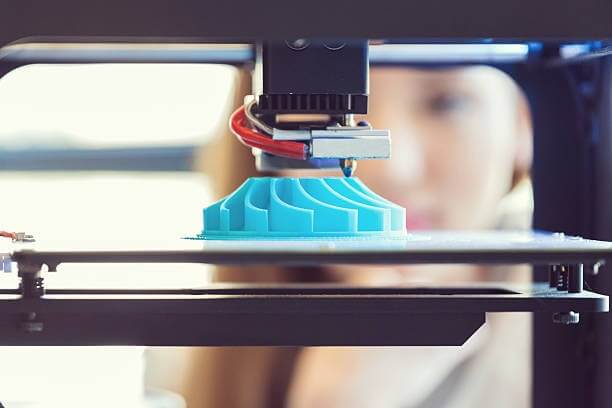 In recent years the conversation around 3D manufacturing and traditional manufacturing methods has shifted—no longer are these viewed as competitors, but instead as complimentary manufacturing methods. Each method, additive manufacturing and subtractive manufacturing, has its own benefits and shortcomings, they are not mutually exclusive.
In recent years the conversation around 3D manufacturing and traditional manufacturing methods has shifted—no longer are these viewed as competitors, but instead as complimentary manufacturing methods. Each method, additive manufacturing and subtractive manufacturing, has its own benefits and shortcomings, they are not mutually exclusive.
Exploring 3D Manufacturing
Additive manufacturing, or 3D printing, is a manufacturing method that builds an object layer by layer, with each layer of material the object is closer to completion.
A CAD file feeds the 3D printing machine the information that it needs to create the object. “Depending on the technology, the 3D printer deposits material, selectively melts and fuses powder, or cures liquid photopolymer materials to create parts based on the CAM data. The 3D printed parts often require some form of cleaning and finishing to achieve their final properties and appearance before they’re ready to use.” (Formlabs) Currently, the most common materials used for additive manufacturing are plastics and metals. There are a range of other materials that have been developed, but are not as widely used (i.e. ceramics, wood and glass).
Additive manufacturing is ideal for a range of product development and manufacturing applications—prototyping, tooling, highly customized parts and short-run productions to name a few. 3D manufacturing technology excels when it comes to product design. Complex geometries offer a high degree of design freedom that traditional manufacturing methods just can’t reach.
Exploring Subtractive Manufacturing
“Subtractive manufacturing is an umbrella term for various controlled machining and material removal processes that start with solid blocks, bars, rods of plastic, metal, or other materials that are shaped by removing material through cutting, boring, drilling, and grinding. These processes are either performed manually or more commonly, driven by computer numerical control (CNC).” (Formlabs)
As with additive manufacturing, a CAD file is used to feed the design data to the manufacturing tool. These instructions tell the tool where to make cuts, holes and channels until the unnecessary material is chipped away and the object is complete.
Subtractive manufacturing is suitable for prototyping, tooling and end-use parts. This technology shines when it comes to high-volume production runs for end-use parts.
Manufacturing Your Product
Since these manufacturing methods are not mutually exclusive, they are often used together during the product development process.
Additive manufacturing is used to make initial prototypes and functional prototypes at a reduced cost with quick turnaround times. Small parts and complex geometries are not a problem for this technology.
In the final stages of product manufacturing, it makes sense to utilize subtractive manufacturing methods for large volume production runs. This technology is much faster when it comes to making large parts and end-use products.
“In manufacturing, subtractive and additive processes often complement each other in the production of tooling, jigs, fixtures, brackets, molds, and patterns. Manufacturers often use plastic 3D printed parts for fast, custom, low-volume, or replacement parts and opt for subtractive metal processes for higher volumes or parts that are subject to more extreme mechanical stress and strain.
Utilizing both additive and subtractive manufacturing results in a hybrid process. This allows product designers and manufacturers to combine the versatility and quick turnaround times of additive manufacturing with the strength of subtractively produced parts.” (Formlabs)
Today’s manufacturing landscape is much different than it was even five years ago, using both technologies during product development is often best practice.
______
3D Innovations is a Product Development Company – from the 3D Design to a fully functional 3D Prototype & Product.
Subscribe to the 3D Innovations newsletter on our Facebook page!

